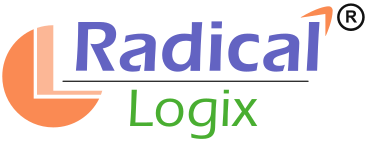Level Up Your School: The Essential Guide to School ERP Solutions

Schools are constantly seeking innovative ways to streamline administrative tasks. The aim is to enhance communication and improve overall efficiency. That's where School ERP (Enterprise Resource Planning) solutions come into the picture.
They are comprehensive software systems designed to integrate and automate various school processes. We aim to provide an in-depth understanding of School ERP solutions. The guide includes their benefits, key features, implementation considerations, and, most importantly, how they can revolutionise the management of educational institutions.
Chapter 1: Understanding School ERP Solutions
School ERP (Enterprise Resource Planning) solutions are comprehensive software systems designed to integrate and automate various administrative and academic processes within educational institutions.
They serve as centralised platforms for managing student information, academic resources, financial transactions, and communication channels. They have been a revolutionary approach towards management, and here's how
- Modernisation of Education: School ERP solutions represent the digital transformation of educational management. They have replaced traditional paper-based processes with efficient, technology-driven systems.
- Enhanced Efficiency: By automating routine tasks such as attendance tracking, grade management, and communication, School ERP solutions free up time for educators to focus on teaching and learning.
- Improved Communication: These solutions facilitate seamless communication between teachers, students, parents, and administrators. It fosters collaboration and engagement.
- Data-Driven Decision-Making: School ERP systems provide access to comprehensive data and analytics. This empowers stakeholders to make informed decisions for the benefit of the institution and its students.
- Competitive Advantage: Institutions that embrace School ERP solutions gain a competitive edge by operating more efficiently and delivering better services. This helps to stay ahead in the digital era.
Chapter 2: Benefits of Implementing School ERP Solutions
- Enhanced Administrative Efficiency and Productivity: School ERP solutions streamline administrative tasks such as admissions, attendance tracking, employee payroll management, and inventory control. Automation reduces manual effort, minimises errors, and accelerates processes. This enable administrators to focus on strategic initiatives.
- Improved Communication Between Stakeholders: School ERP platforms provide dedicated Apps for teachers, parents, and students to access relevant information and communicate effectively. Features such as messaging, announcements, and event calendars facilitate seamless interaction. This helps to foster stronger partnerships between home and school.
- Data-Driven Decision-Making Through Comprehensive Analytics: By centralising data on student performance, attendance, finances, and more, School ERP solutions empower administrators with valuable insights. Analytical tools enable informed decision-making, identify trends, and support interventions to improve educational outcomes.
- Streamlined Academic and Operational Processes: Integration of various modules within a School ERP system streamlines academic workflows from enrollment to graduation. From managing examinations and assessments to tracking resource utilisation and budgeting, these solutions optimise operations. This ensures smoother functioning of the institution.
- Cost Savings and Resource Optimization: Through automation and efficiency gains, School ERP solutions help reduce administrative overheads and eliminate redundant processes. Additionally, improved resource allocation and financial management contribute to cost savings. This enables schools to allocate resources more effectively towards educational initiatives.
Chapter 3: Key Features of School ERP Solutions
When it comes to choosing the suitable ERP, there is no one-size-fits-all. Although, when it comes to key features, here are the top ones you should not miss.
- Student Information Management: Comprehensive modules for tracking attendance, grades, behaviour, and other vital student data.
- Teacher and Staff Management: Tools for scheduling, payroll processing, performance tracking, and professional development.
- Parent and Student Portals: These are dedicated platforms for communication access to grades, attendance records, and school announcements.
- Financial Management: Modules for fee collection, budgeting, accounting, and generating financial reports.
- Employee and Payroll Management: Automated employee tracking, attendance, salary release, and other HRM tasks
- Library and Resource Management: Systems for cataloguing, circulation, and tracking of library materials and educational resources.
- Examination and Assessment Management: Tools for exam scheduling, grading, and analysis of student performance.
Chapter 4: Implementation Considerations
Implementing a School ERP solution requires careful planning and consideration of various factors to ensure its successful integration into the educational institution's ecosystem. Here are key implementation considerations:
- Needs Assessment: Conduct a comprehensive assessment of the institution's needs. Consider factors such as student population, administrative requirements, and existing systems. Identify pain points and prioritise functionalities required from the School ERP solution.
- Customization and Scalability: Choose a School ERP solution that offers customisation options to tailor the system according to the institution's specific requirements. Consider the solution's scalability to accommodate future growth and evolving needs.
- Change Management: Prioritise effective communication, training, and support to facilitate the smooth adoption of the School ERP solution. Address resistance, solicit feedback, and foster a culture of collaboration to minimise disruptions and maximise success during the implementation process.
- Training and Support: Provide comprehensive training to staff members on using the School ERP system effectively. Ensure that the vendor offers adequate training resources and ongoing support to address any technical issues or questions that may arise during implementation and beyond.
- Data Security and Privacy: Prioritise data security and privacy considerations when implementing a School ERP solution. Ensure compliance with relevant regulations such as GDPR or FERPA. Also, implement robust security measures to protect sensitive student and administrative data.
- Budgeting and Cost Analysis: Conduct a thorough cost analysis considering upfront costs, recurring fees, and potential savings or ROI from implementing the School ERP solution. Allocate budget resources accordingly and consider long-term financial implications.
- Pilot Testing: Before full-scale implementation, conduct pilot testing of the School ERP solution with a small group of users to identify any issues or areas for improvement. Gather feedback from stakeholders and make necessary adjustments before rolling out the system to the entire institution.
By thoughtfully addressing these implementation considerations, educational institutions can maximise the benefits of School ERP solutions. This can facilitate a smooth transition towards more efficient and streamlined management processes.
Conclusion
As educational institutions continue to adapt to the digital age, School ERP solutions have emerged as indispensable tools for efficient management and administration. By leveraging the features and benefits outlined in this guide, schools can streamline their operations and enhance communication. This will ultimately provide a better learning experience for students, teachers, and parents alike.



